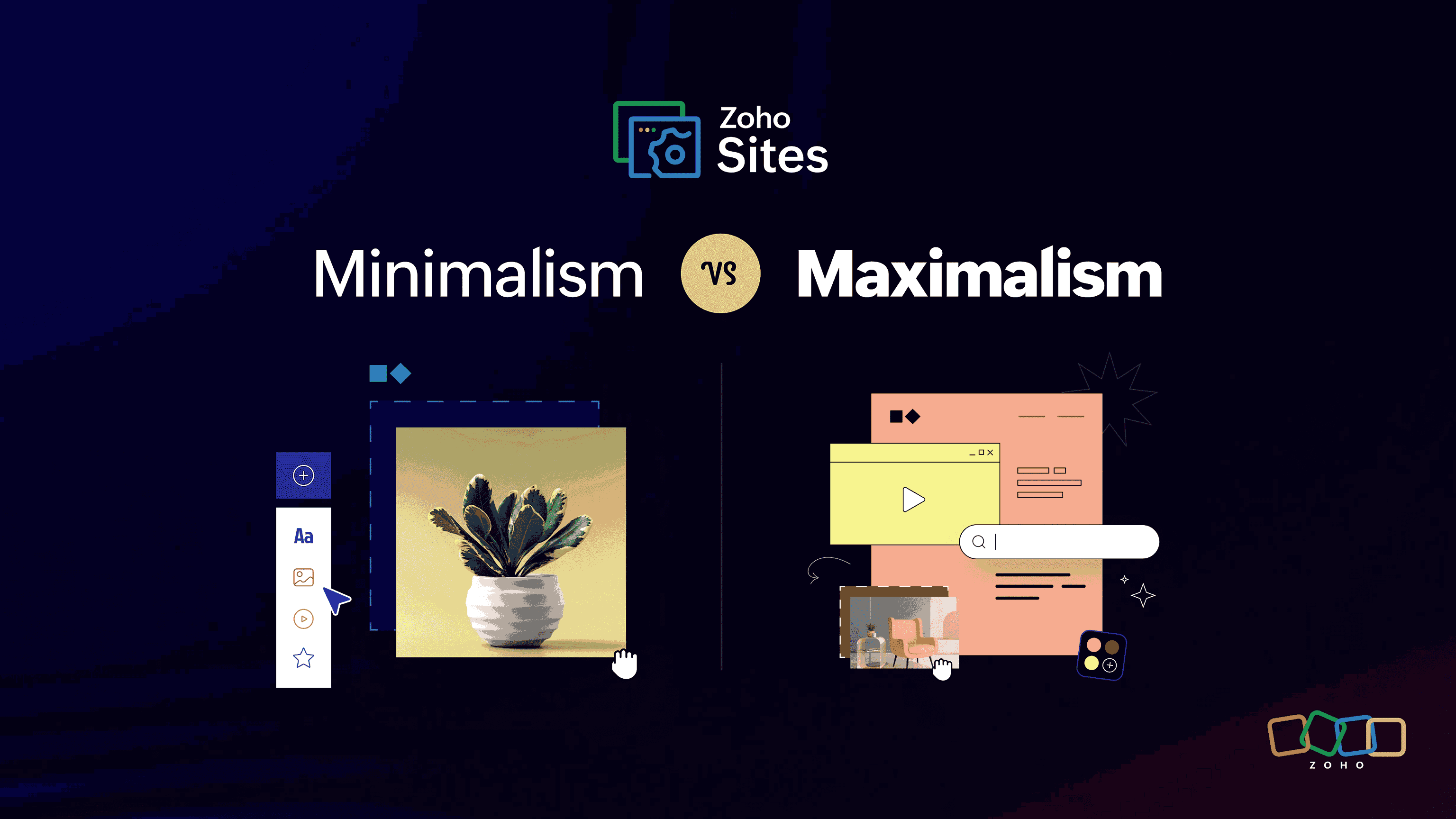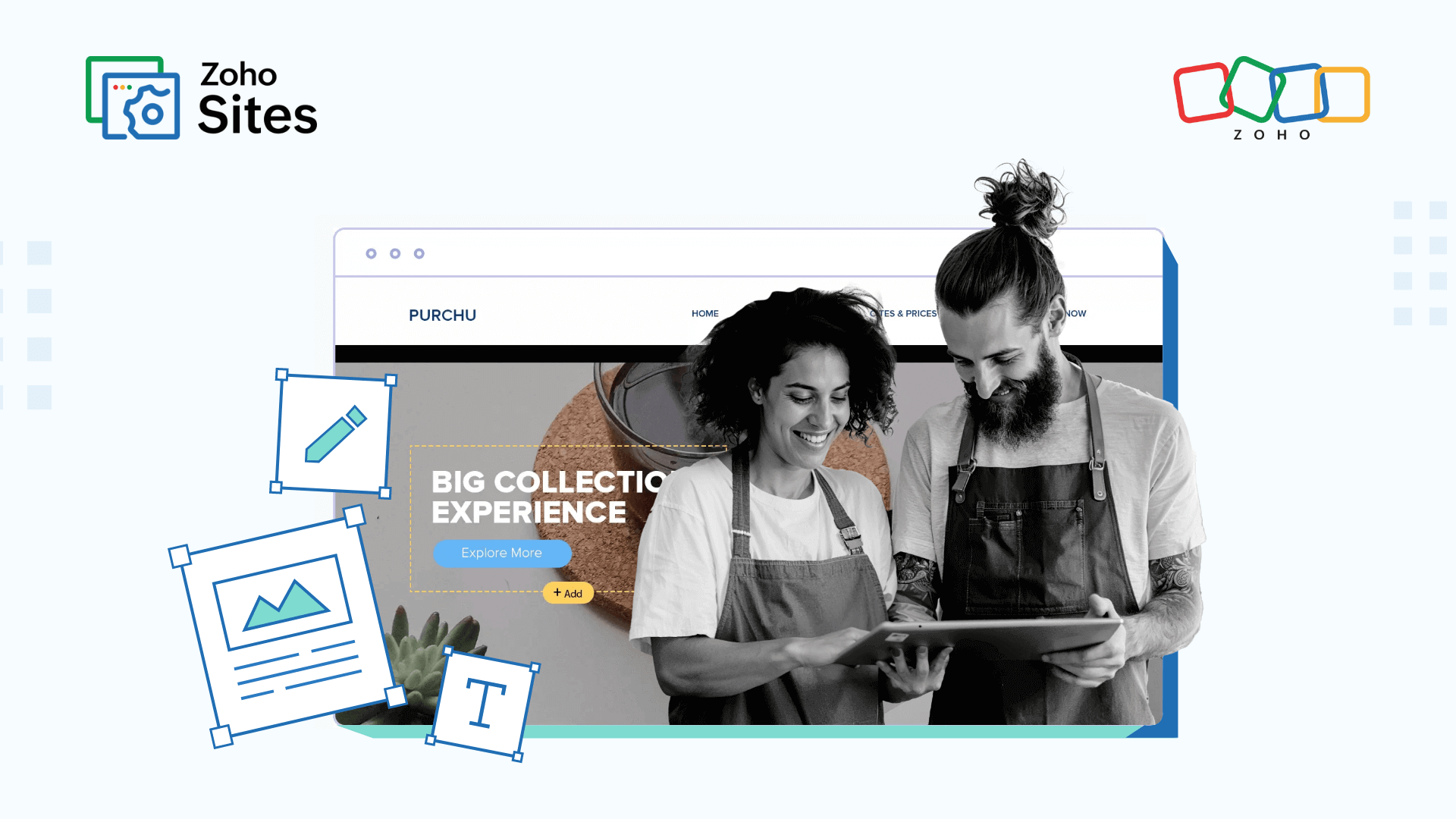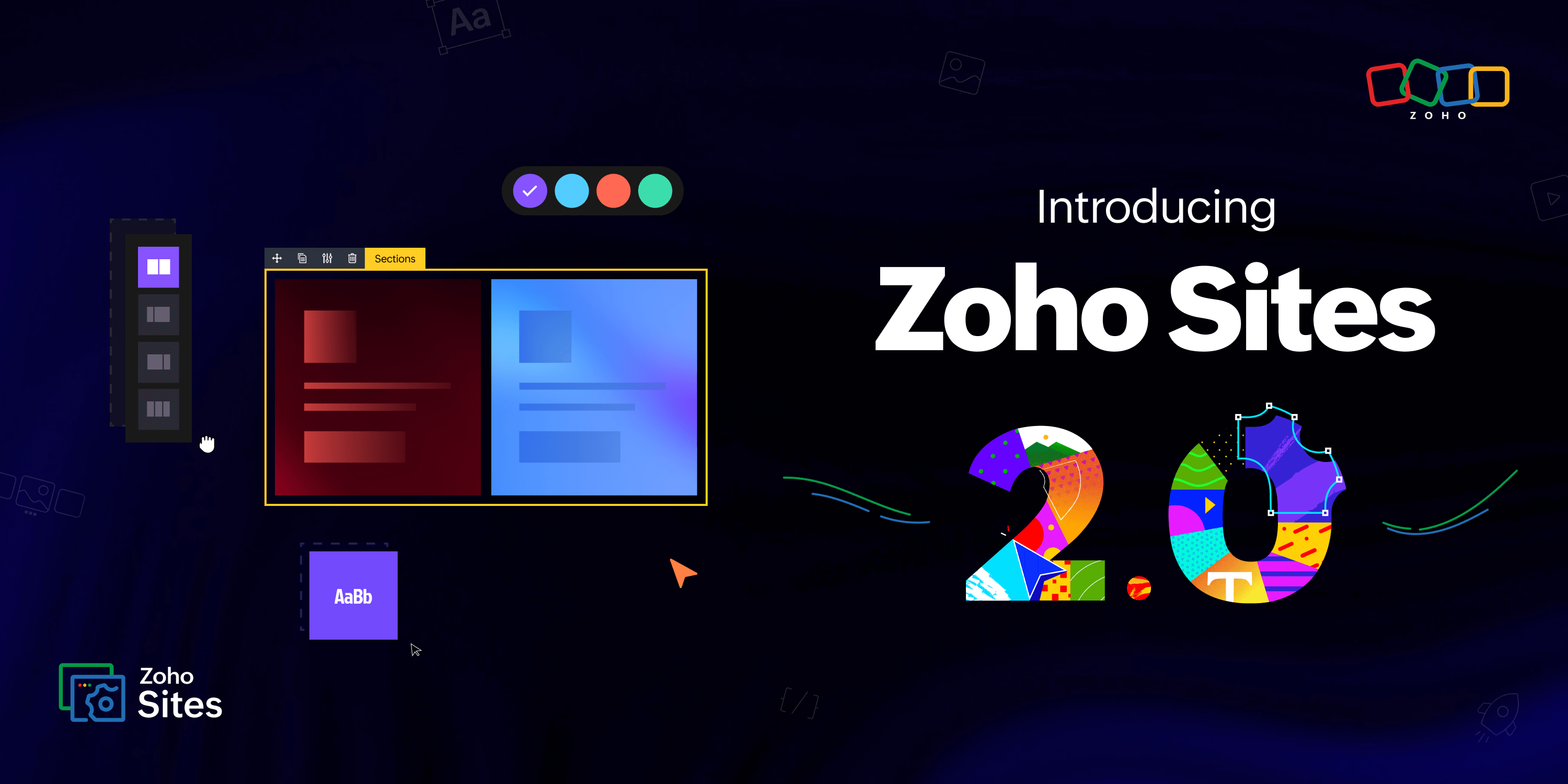A comprehensive guide to social media integration
- Last Updated : November 1, 2023
- 2.3K Views
- 11 Min Read
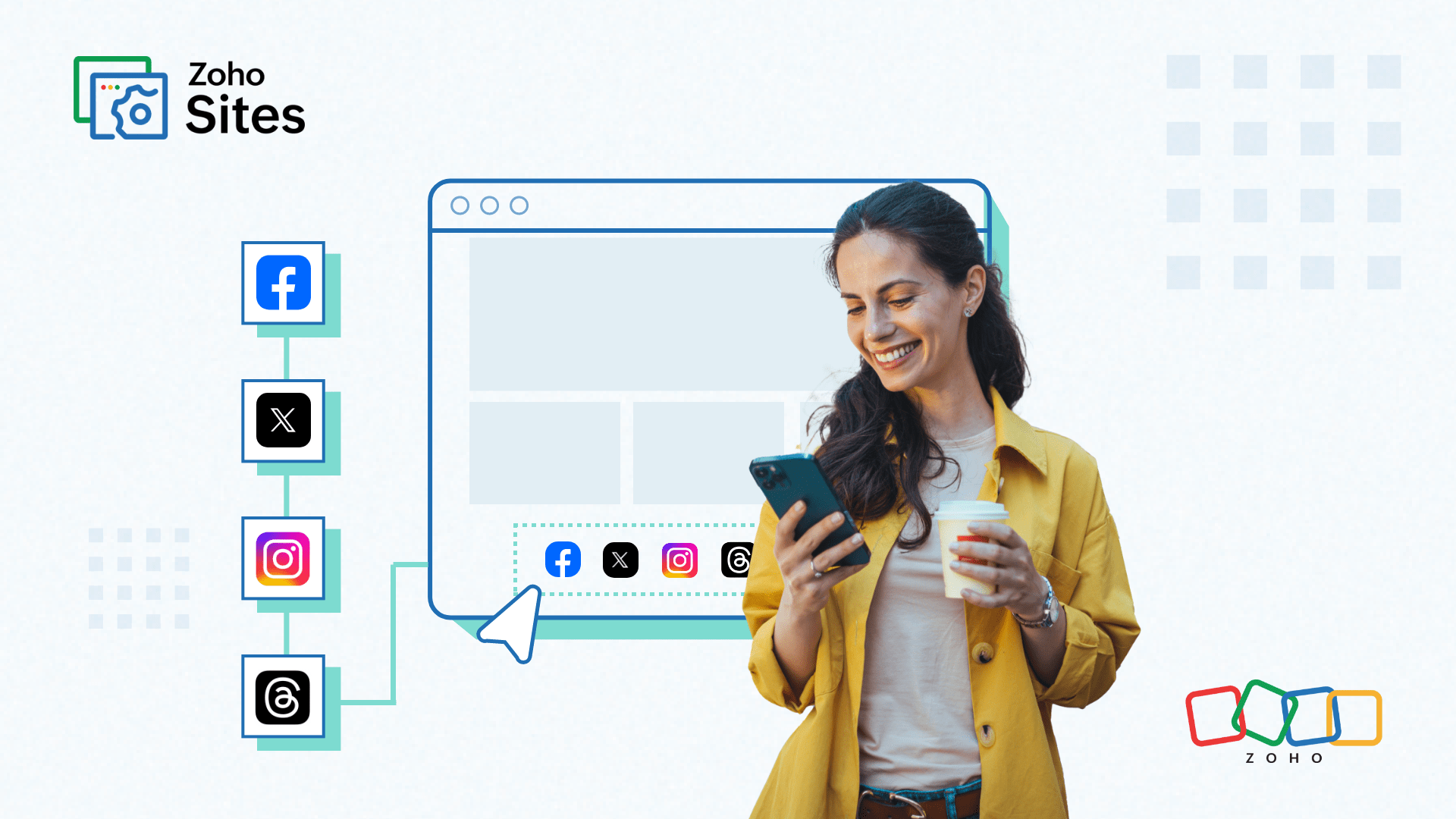
The ubiquitous influence of social media is both unquestionable and unparalleled. This is evidenced by the fact that there are 4.8 billion social media users, which accounts for roughly 60% of the world's population! It's no secret why individual brands and organizations are clamoring for customer attention on all social media platforms. If you're looking for more proof, consider Instagram's research, which found that 70% of surveyed individuals either liked or didn't mind ads when watching videos on the platform. Additionally, LinkedIn reported that 89% of B2B marketers use their platform to generate leads.
The information you put out on any of these platforms serve as breadcrumbs, though, ultimately leading your audience to your website. Remember, your website is always at the center of any activity, where you give all sorts of information to keep your target audience hooked and perhaps nudge them into booking your service or signing up for your newsletter. In a similar vein, when website visitors choose to follow you on social media, they are likely to extend their interaction with you and, in the future, remember your brand when making a purchase decision.
Creating an interconnected world is key, allowing your customers to effortlessly shuttle between platforms and choose where they want to engage. This seamless transition is the sweet spot for enabling flawless communication. Social media integration is the solution to achieving this harmony.
What is social media integration?
Social media integration involves the clever use of social media as a part of your marketing efforts. You do that by leading your social media audience to your website and vice-versa. In doing so, you allow them to freely explore your brand personality and engage with you across channels. When you manage to do this, your customers won't be passive spectators but rather active participants who'll be sparking conversations around you and your brand.
These are some of the popular social media platforms you can choose to incorporate in your social media integration strategy:
- X (formerly Twitter)
- TikTok
- Snapchat
- Telegram
- Threads
How to integrate social media
There are many ways you can intelligently enable website social media integration. Let's look at the top five ways you can do this.
Display social media buttons on your website
Placing social media buttons on a website can be a valuable way to enhance your online presence and engage with your audience. Here are some dos and don'ts to consider when adding social media buttons to your website:
DOs:
Choose the right platforms: Select the social media platforms that are most relevant to your target audience and industry. Don't overwhelm your visitors with too many buttons.
Use prominent placement: Position social media buttons prominently on your website, typically in the header, footer, or sidebar, and specifically on the home page, thank you page, about us page, and contact us page. Make them easily visible and accessible.
Be consistent with branding: Ensure that the social media icons and colors align with your brand's identity for a cohesive look.
Link to active profiles: Verify that the links lead to your active social media profiles. Dead or broken links can be frustrating for users and an embarrassment for you.
Open in new tab: Set the social media links to open in a new tab or window to keep users on your website. They shouldn't abandon or forget your website altogether when they go to your social media account.
DON'Ts:
✗ Clutter your page: Don't overcrowd your website with too many social media buttons. Stick to the platforms most relevant for your brand and target audience.
✗ Position intrusively: Don't make the buttons so large or intrusive that they distract from your website's content.
✗ Use obsolete icons: Don't use outdated or unofficial social media icons, as this can confuse users and harm your brand's credibility. Facebook's logo changed over the years and even more recently, Twitter rebranded itself as X. You need to be mindful about these changes.
✗ Ignore privacy: Respect user privacy and data protection regulations. Clearly explain how you use social media data if you collect it.
✗ Load slowly: Ensure that the social media buttons don't slow down your website's loading speed. Optimized images and scripts are essential.
The British bistro Pret a Manger does this well by incorporating the social media icons on its homepage, footer, and contact us page among many other key areas.
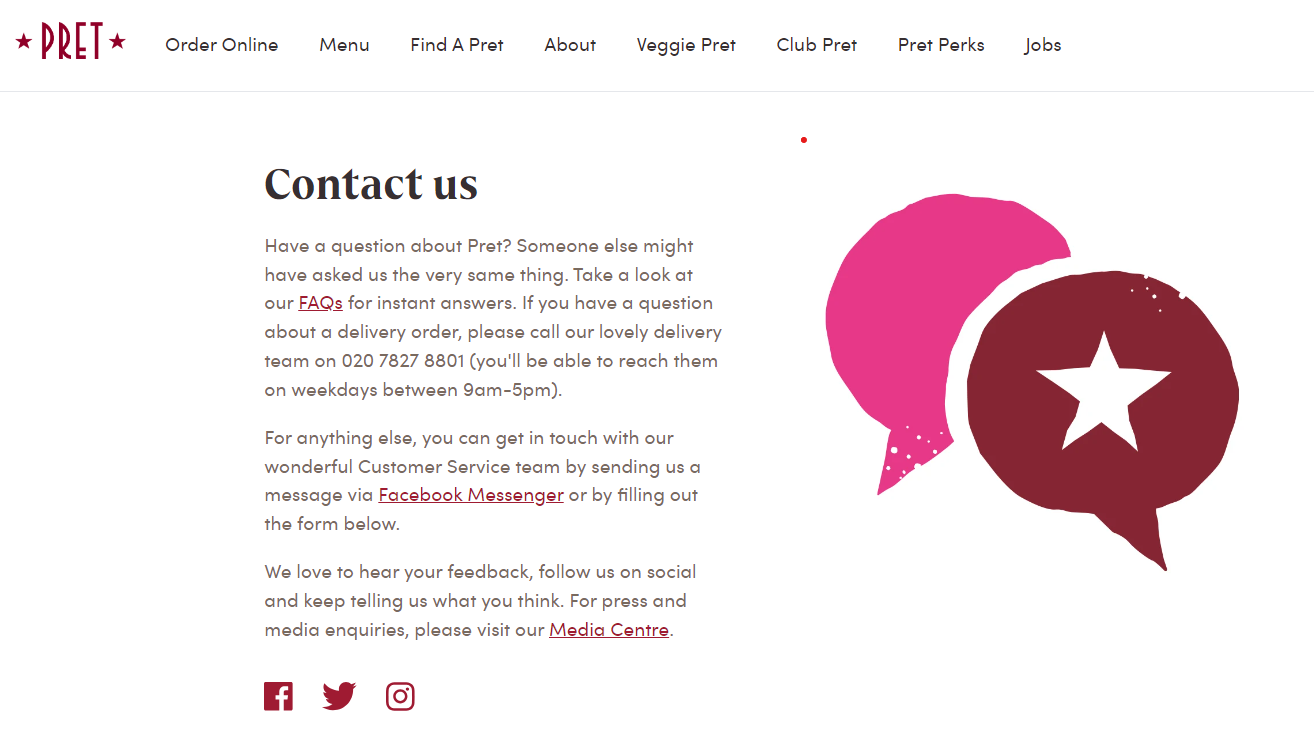

Enable sharing options
Share buttons on a website can help visitors easily share your content on their preferred social media platform, increasing its reach and engagement. This enables cross-channel promotion.
DOs:
Place buttons on selective pages: Knowing where to place these share buttons will help you achieve cross-platform visibility. Include these buttons on your product pages, blog posts, articles, videos, and events.
Position buttons strategically: Position them where people can easily notice and share without distractions. For example, placing them below an intriguing headline and tagline/strapline in an article or blog post may encourage more shares. Embedding social share buttons at the bottom of a product or service description can also be effective.
Include relevant social media channels: Focus on platforms where your audience is actively engaged. Discussing hairstyle techniques may not lead to shares on LinkedIn unless someone decides to give it a professional spin. Understand where your audience spends time and what's most relevant to your content.
Incorporate responsive designs: Ensure that share buttons are mobile-friendly and adapt well to different screen sizes, providing a seamless user experience on mobile devices.
Display share counts: Consider displaying share counts (e.g., "Shares" or "Retweets") next to share buttons to show social proof and encourage more sharing.
DON'Ts:
✗ Provide too many social media options: Avoid overwhelming users with too many choices. When you provide an excessive number of social media platforms as options, your audience may be put off by the cluttered social media tray and become confused.
✗ Overuse social share buttons: Refrain from placing social media buttons on every single page and section. This can diminish the value of share buttons and potentially distract users to the point where they abandon the page.
✗ Use clunky icons: Don't use oversized, clunky icons that clash with the website's theme and stand out awkwardly. Opt for well-designed, chic icons that neither distract nor go unnoticed.
✗ Display low numbers: If there aren't many shares, consider not displaying share counts, as this can reflect a lack of engagement. Users may scroll past without sharing your page or content if they see low numbers.
✗ Block content: Avoid positioning social sharing buttons in a way that disrupts the content on the screen. Poorly designed buttons or faulty plugins can cause them to overlap with text, leading your audience to quickly judge the lack of good user interface (UI).
A fine example of this can be seen on BBC's website where you can spot the sharing options at all the right places. Notice how skillfully they invite readers to like them on three different platforms (with links to their active profiles) and also provide a share button with options to important social media channels.
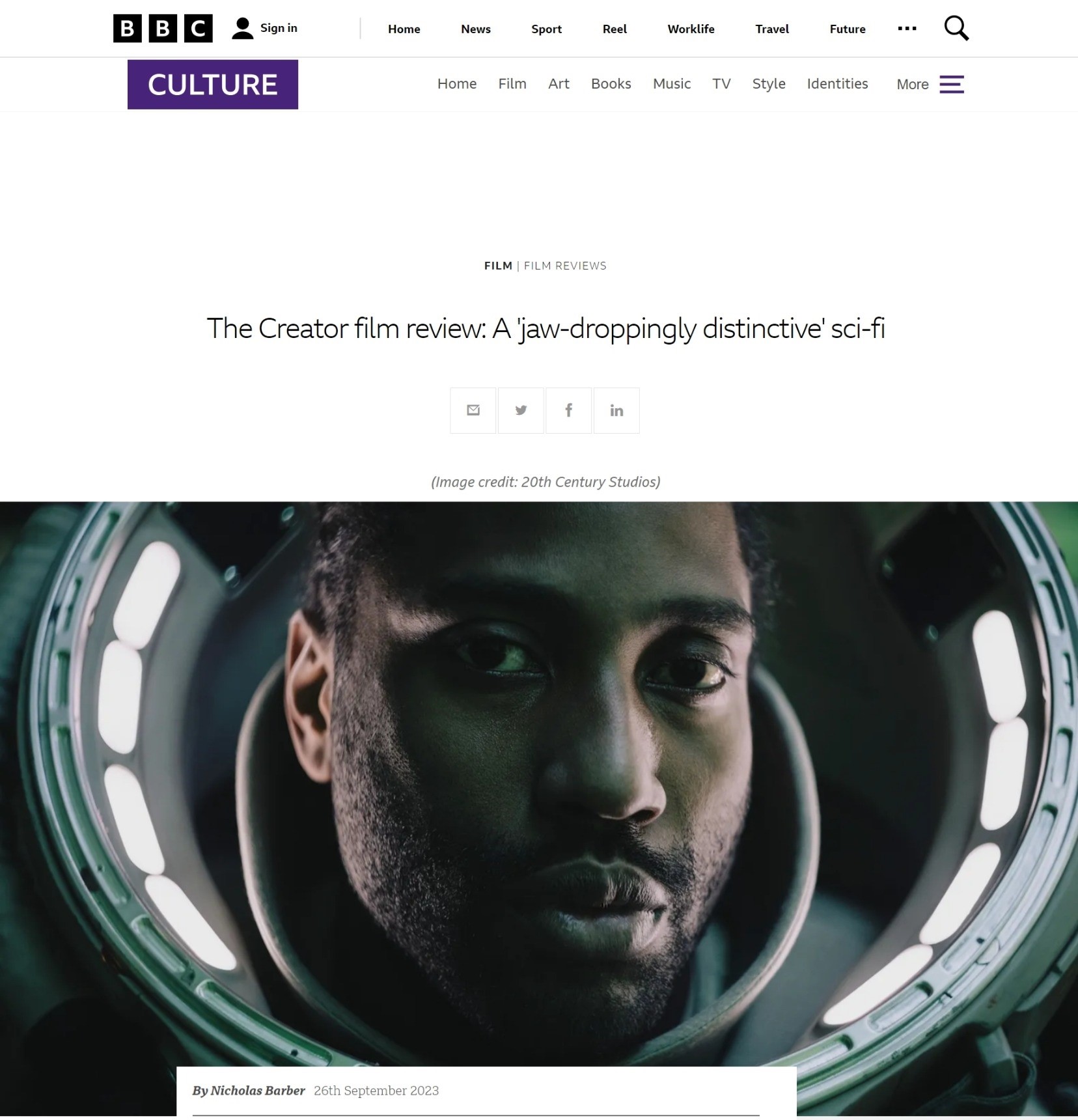
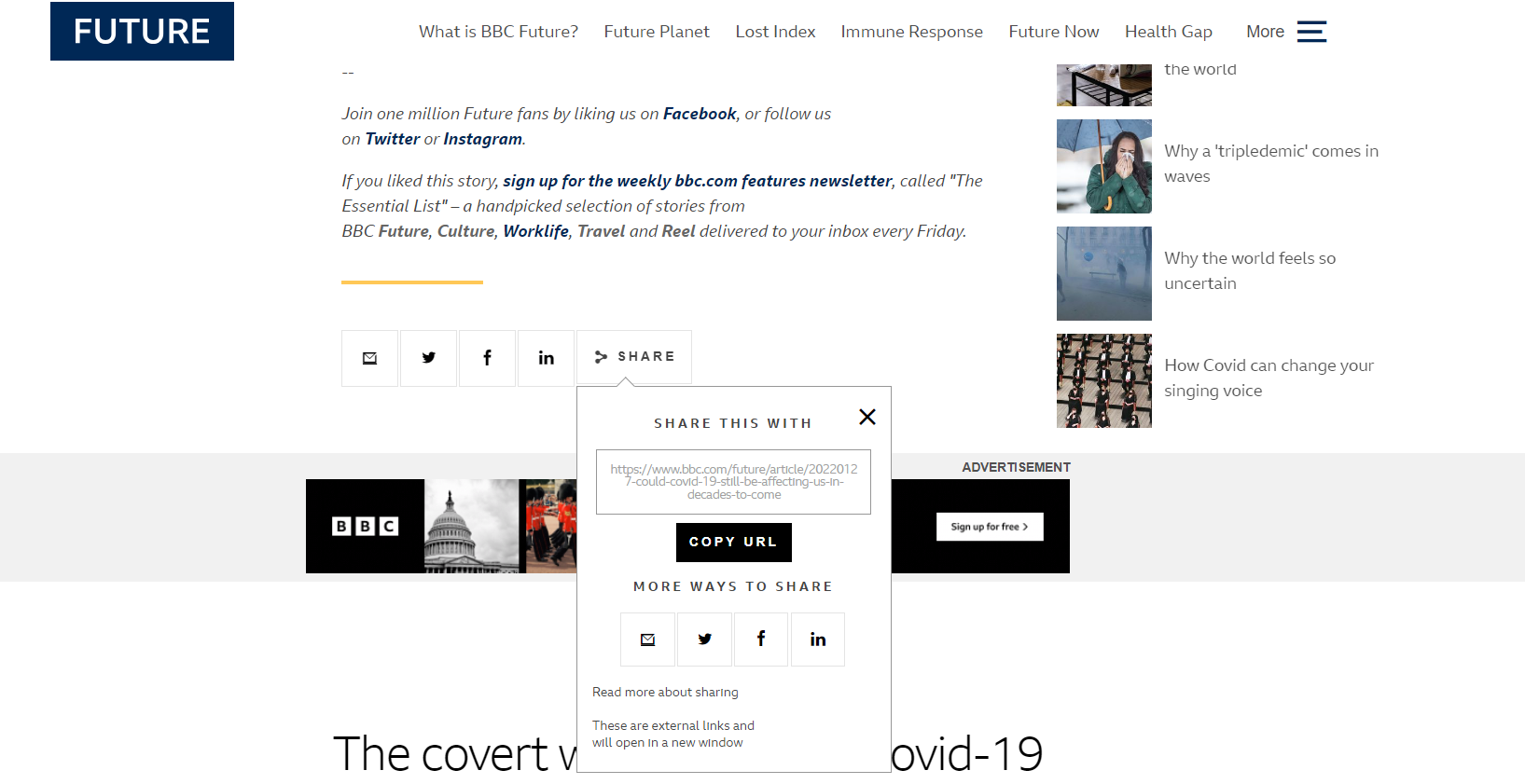
Integrate social login
Enabling social login for websites simplifies the user registration and login process. It enhances user experience and increases engagement by allowing users to access your site using their existing social media credentials, reducing the need for lengthy forms and passwords. However, here are some dos and don'ts to consider when implementing social login:
DOs:
Provide multiple options: Offer a variety of social login options (e.g., Facebook, Google, Twitter) to accommodate user preferences.
Explain data usage: Clearly communicate how user data obtained from social login will be used, respecting privacy and data protection regulations.
Streamline registration: Use social login to simplify the registration process, but allow users to connect or disconnect their social accounts easily.
Test user experience: Ensure a smooth and intuitive social login experience across various devices and browsers.
Offer traditional login: While social login is convenient, keep traditional login methods as an option for those who prefer them or for users without social media accounts.
DON'Ts:
✗ Force social login: Avoid making social login mandatory; provide an alternative registration method for users who prefer not to link their social accounts.
✗ Overcomplicate permissions: Don't request excessive permissions when users connect their social accounts. Ask only for what's necessary to access your website's features.
✗ Disregard privacy concerns: In the previous point, we mentioned extra permissions, which would be a hassle from the customer's viewpoint. Additionally, this is important for organizations if they don't want to flout CCPA and GDPR regulations, which have guidelines regarding data collection and sharing practices.
✗ Compromise security: Social login, relying on third-party authentication, carries security risks. Sometimes, because of data breaches, attackers gain access to linked accounts across various websites and apps. Steps should be taken to ensure that kind of data compromise never happens.
✗ Collect data without consent: Don't use social login solely to gather user data for marketing without clear consent. Be transparent about your intentions.
A stellar example for this would be the music streaming platform Spotify, which provides the four most relevant social login choices while also giving the option of a traditional login with email address and password.
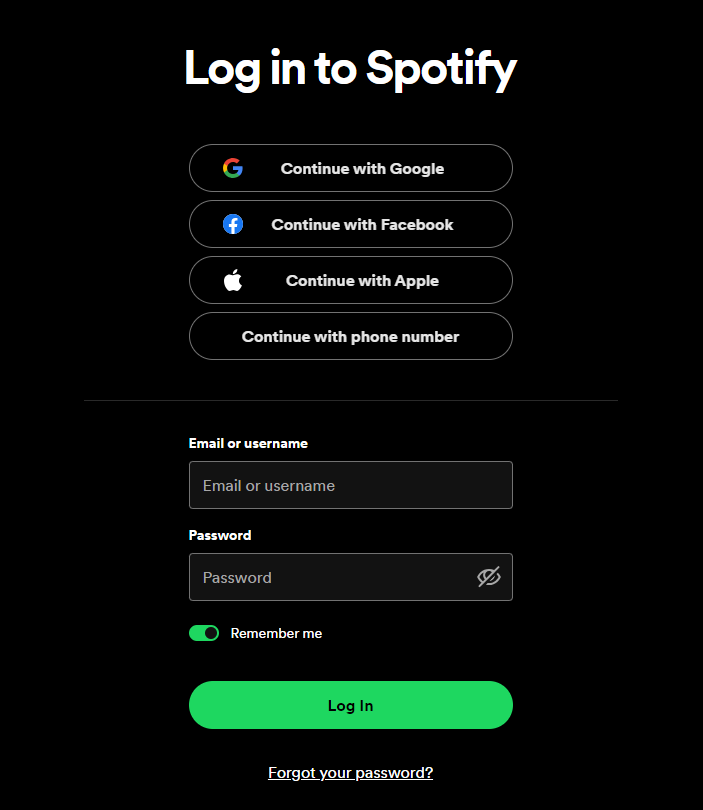
Facilitate social commenting
Social commenting, where websites allow users to comment using their social media profiles, can enhance user interaction. By following these dos and don'ts, you can implement social commenting effectively, fostering meaningful discussions, enhancing user engagement, and maintaining a respectful and valuable comment environment on your website.
DOs:
Give easy access: Make it simple for users to log in and comment using their social media accounts. This reduces friction and encourages participation.
Provide a user-friendly interface: Ensure that the commenting interface is intuitive and user-friendly. The whole idea is to make commenting easy, encouraging interaction, and UI should be conducive for this.
Establish community guidelines: Establish clear community guidelines to set expectations for respectful and constructive commenting behavior. Mention the consequences of posting rude or off-putting comments.
Implement moderation tools: Invariably, social commenting will egg on the trolls and other cyber bullies to post inflammatory or disrespectful comments. Make sure you implement moderation tools to filter and manage comments. This helps maintain a positive and respectful comment environment.
Share prompt responses: Respond promptly to user comments when appropriate to foster engagement and address questions or concerns. This will make users feel heard and seen, and it leaves an overall positive impression of your brand.
Display user profiles: Display user profiles and social media avatars next to comments to add a personal touch and credibility.
DON'Ts:
✗ Force social commenting: Don't force users to comment or connect their social media profiles to comment. Allow anonymous commenting options for those who prefer privacy, while keeping a tab on the anonymous comments as well.
✗ Over-moderate comments: Avoid over-moderation, which can stifle genuine discussion. Find a balance between free expression and maintaining a respectful environment.
✗ Ignore feedback: Pay attention to user feedback and concerns—not just regarding the contents of your website but also the commenting system. Ignoring user input can lead to a decline in engagement.
✗ Have complex interfaces: Avoid overly complex or confusing commenting interfaces that discourage users from participating. Remember you are trying to simplify the commenting system, not make it messier and inconvenient.
✗ Overlook moderation: Don't neglect comment moderation. Failing to filter out spam or offensive content can harm your website's reputation. One sour comment will bring out many, discouraging genuine participants in a conversation.
Embed live social media feeds
You can embed live social media feeds on your website, which can help keep your site content fresh and engage your visitors with real-time updates. You can do it as a brand wall to flash one great feed combined from 2-3 platforms, an event wall to highlight only event-specific posts, or a hashtag wall when you run a marketing idea to get your users to engage with you.
DOs:
Embed selective feeds: Embed social media feeds that are relevant to your website's audience and content. Focus on platforms where your target audience is active. Try to limit to feeding posts from two platforms and no more.
Utilize official tools: Use official widgets or plugins provided by social media platforms (e.g., Twitter, Facebook, Instagram) for embedding feeds. These tools ensure compatibility and functionality.
Be consistent with branding: Customize the design of the embedded feed to match your website's branding and style for a cohesive look.
Incorporate responsive designs: Ensure that the embedded feed is responsive and adapts to various screen sizes. It should look interactive, slick, and inviting on a desktop, phone, or tablet.
Encourage interaction: Allow users to interact with the embedded feed by liking, commenting, and sharing posts. This promotes engagement and user participation.
DON'Ts:
✗ Confuse users with many feeds: Don't embed too many social media feeds on a single page. Select a few relevant feeds to avoid clutter. Feeds from too many platforms may cause distraction or confusion.
✗ Include inappropriate content: Avoid embedding social media feeds that may contain offensive or inappropriate content. Use content filters and moderation tools when possible.
✗ Disrupt user experience: Don't place embedded feeds in a way that disrupts the overall user experience on your website. Ensure that they enhance rather than distract from your content.
✗ Overload your website: Be cautious not to overload your website with too many feeds, as this can lead to slow loading times. Optimize images and scripts for efficiency.
The cosmetics and skincare label Florence has a pleasant-looking live social feed that acts as a brand social wall. You can click on the photo that opens on website and gives you the option of going to their Instagram page. Note that they have feeds from only two platforms, Instagram and TikTok.
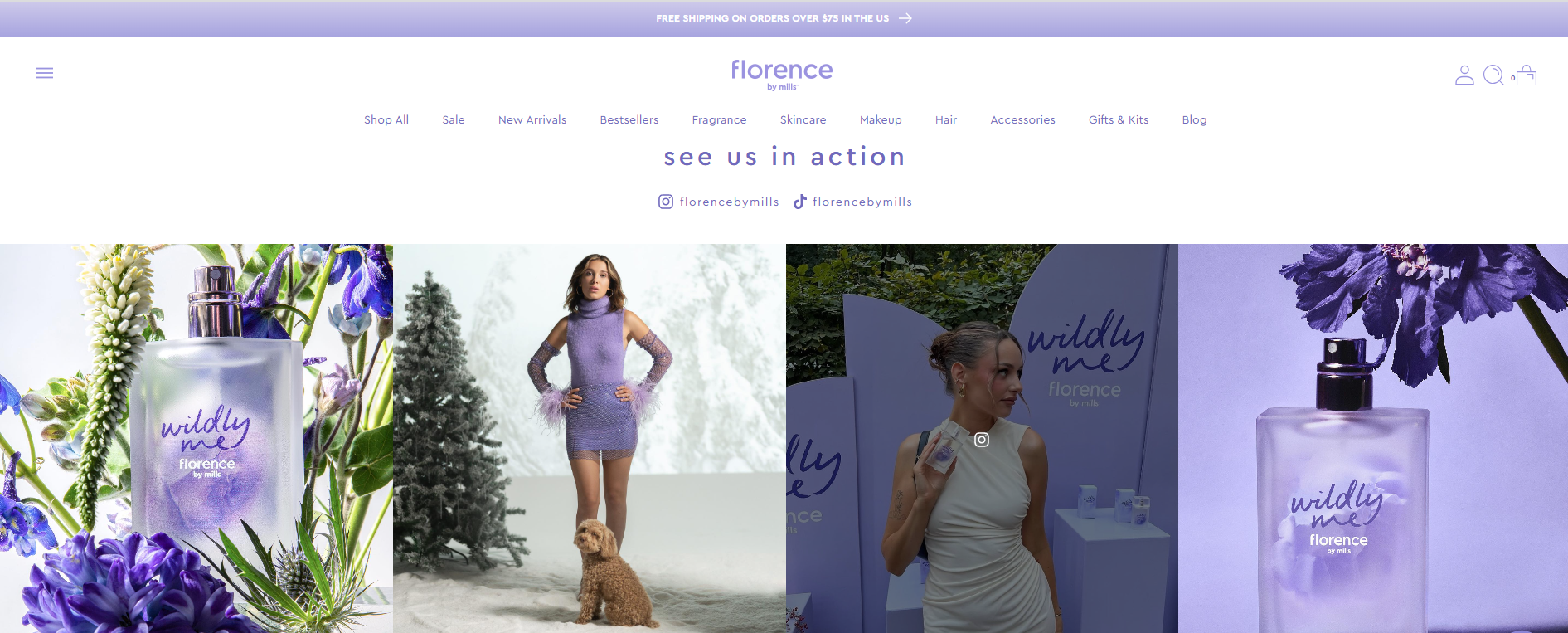
Driving traffic from social media to website
Social media platforms can also guide their visitors to their website. The majority of these platforms include a link in the bio, helping the audience navigate to the website homepage or specific landing pages with a simple click. Some social media platforms allow you to include more than one link in your bio, making it convenient to highlight multiple pages. However, others have restrictions. In such cases, tools like Linktree and Taplink offer solutions, allowing users to click on specific images, each linked to relevant landing pages.
Also, every time you go live on Instagram or LinkedIn, you can direct your audience to the website. You can always include posts with a call to action (CTA) or have polls or quizzes, gradually directing them to the website.
Benefits of social media integration
Website social media integration offers several benefits that can enhance your online presence besides improving overall user experience. Some key advantages include:
Increased visibility: Social media integration allows you to extend your brand's reach across multiple platforms, increasing your visibility and potential for discovery by a broader audience.
Enhanced user engagement: Social media features such as sharing buttons, comments, and embedded feeds encourage users to interact with your website content, fostering engagement and interaction.
User-generated content: Social media integration can leverage user-generated content such as comments, reviews, and user-submitted media to enrich your website and build community engagement.
Data insights: Integration with social media platforms provides valuable data and analytics, helping you understand user behavior, preferences, and trends, which can inform your content and marketing strategies.
Improved SEO: Social signals, such as shares and likes, can positively impact your website's search engine ranking, potentially leading to higher visibility on search engine results pages.
Community building: Social media integration allows you to build and nurture a community around your brand, fostering a sense of belonging and loyalty among your audience.
In conclusion, integrating social media with your website is not just a strategy—it's a necessity in the digital landscape. It's essential to create a holistic online presence that resonates with your audience and encourages active participation across various channels.








